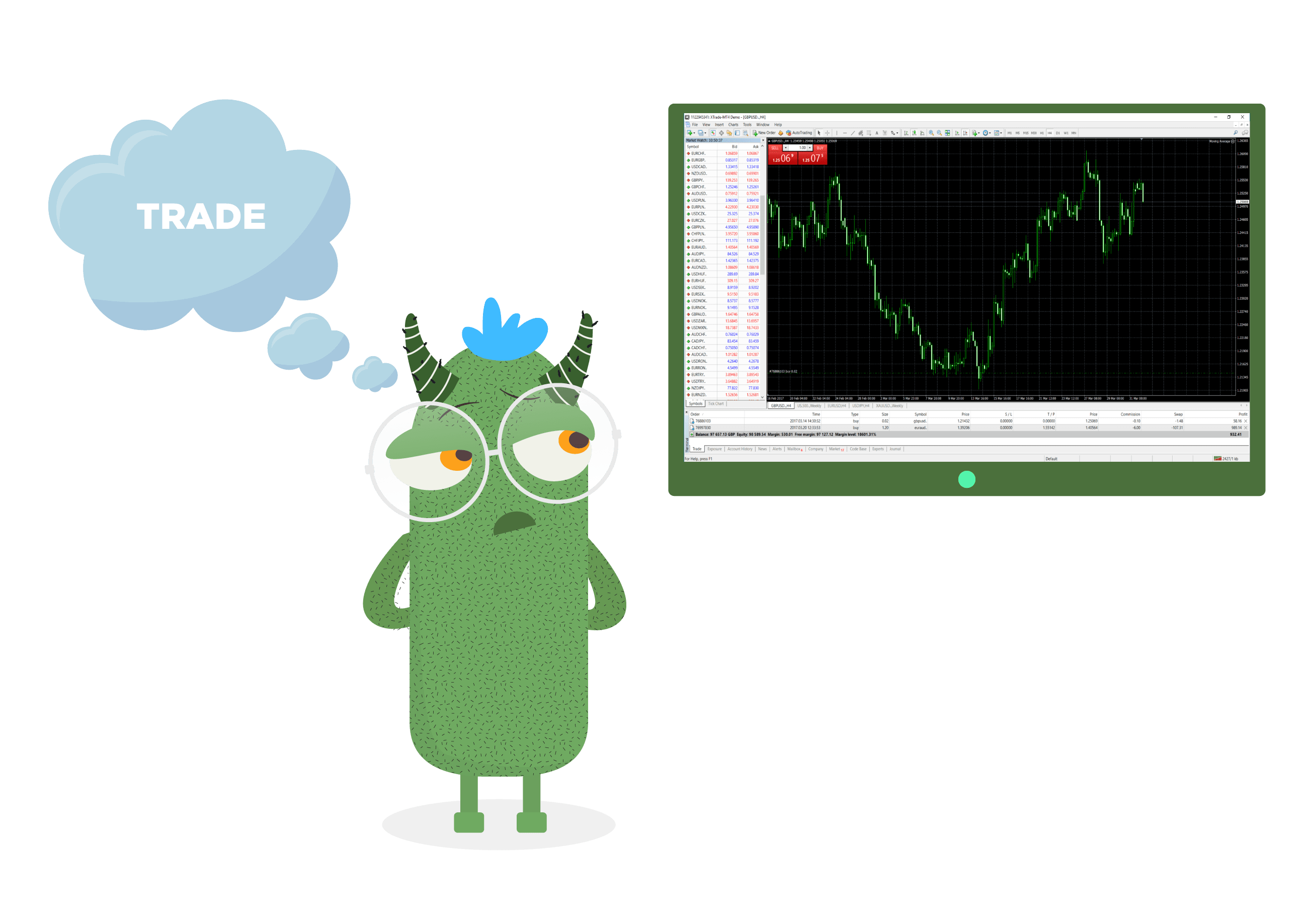Our partner, XM, lets you access a free demo account to apply your knowledge.
No hidden costs, no tricks.

Receiving the news that a company is splitting its stocks might raise some questions for the shareholder. Why? Because it can have a different impact on the market or potential traders. However, if you are a shareholder, there is really nothing to worry about.
A stock split is good for investors who want to buy the stock - they can now purchase the shares at a lower price. On the other hand, shareholders will raise numerous questions about the upcoming market movement, and what will happen to the stock price and dividend receivables.
Usually, dividend payments do not change after a stock split. They are automatically adjusted by the company, and those who own the stock will find themselves owning an increased number of shares, but each of them is worth a bit less.
Splitting stocks can affect the trader’s market position. They might sell their position to avoid any major price drop, but is it the right strategy after a stock split? And how do traders react after such an event? In the following guide, we will explain what causes the stock split, and what it means for the traders.

A stock split literally means that a stock is cut into smaller pieces, resulting in more outstanding stocks with the same overall value of all shares. When a company divides its stocks, it is basically increasing the number of outstanding shares for new traders to get involved.
This event does not affect the value of the stocks that owners hold. It only affects the quantity of the stocks they hold. So, if a trader holds 1 stock for the price of $100, after the stock split they will own more than one stock, and collectively they have the same value of $100.
When a stock price overgrows, a company may announce that it is splitting stocks to stimulate more liquidity, by enabling more shareholders to buy stocks, which now become at a cheaper rate than what they used to be.
This change in the stock structure might bring some ambiguity, but it does not mean that your stock now has a higher or lower value, or that your dividends will be split. It can only create speculations in the market for those who don’t know what will happen, but essentially, it does not change anything for the shareholder.
Let’s imagine that Twitter has 1,000,000 outstanding shares each costing $100. This gives Twitter a valuation of $100 million. If the company announces a 1-to-2 stock split, it will have 2,000,000 shares and each share will now cost $50. In the end, it does not affect the company’s overall stock value, as it still gives Twitter a $100 million valuation.
There are several ways a company may split its stock. The most common way of the forward stock split is a one-to-two or one-to-three stock split, where one stock becomes two or three stocks, and the price of each stock is divided by two or by three respectively.
So, according to the previous example, the stock was priced at $100. After a 1-to-3 split, we have 3 stocks, each of them valued at $33.33.
In a few cases, a company may announce a 1-to-10 or 1-to-20 stock split - similar to what Google announced in February of 2022. It basically split its stock on a 1-to-20 basis and cut its stock price valued at $3,000 to $150, inviting more traders to purchase its shares.
The previously discussed splits are the most common and are called forward stock splits. On the other hand, a company may announce a reverse stock split, which is exactly the opposite.
A reverse stock split happens when a company wants to decrease its shares and increase its stock price. Such a move is done to minimize speculation and volatility over its stocks.
Additionally, if a company sees that its stock price is devaluated, and might get delisted, a reverse stock split is done to raise the stock price according to the split ratio. For example, if a company announces a 10-to-1 reverse split, every 10 stocks become 1 stock, and those who owned less than 10 stocks will not hold any stocks anymore.
The resulting stock price after the reverse stock split works in opposite to the forward stock split. If you had 20 stocks of Twitter, each costing $100, after a reverse split of 10-to-1, you will have 2 stocks and each of them costing $1,000. In the end, the value of your holdings remains the same.
In 2011, Citigroup announced a reverse stock split, which decreased the number of its available stocks from 29 billion to 2.9 billion. This move was to improve the company’s position since its stock price was overlooked due to its cheap price.
There are different hypotheses as to why a company would split its stock. One reason is that the company is performing very well in the market, and is expecting a positive yearly earning report, which contributes to increasing company profitability and assets value.
However, the most common reason is to generate a liquidity influx and to enable new traders to buy these stocks.
If a company’s stock price starts to increase rapidly, it is definitely good for the shareholders. However, an expensive stock will not be appealing anymore to other investors, which means that the buying and selling activities for this company’s stock will decrease.
In addition, when the stock price is increasing in value, it makes perfect sense for shareholders to keep holding the stock because their investment is now worth more than the initial price they paid for it. In this case, even if a new trader wants to buy the stock, they will not be able to find one, because no one is willing to sell the stock they own.
Therefore, a company announces a stock split to increase the number of shares available in the market and lower the stock price. Now, new traders are motivated to buy shares, which makes the company’s stock more alive with more traders buying and selling the company shares.
For example, Coca-Cola company's stock price has been steadily increasing for most of its lifetime, especially since 2009 when it was at $18. By 2012, the stock price reached $40 and was expected to keep growing. Coca-Cola decided to keep its shares available for traders in the stock exchange market, in order to avoid overpricing, and as a result, a 2-to-1 stock split was announced.
The Coca-Cola 2:1 stock split in 2012 pushed the stock price down to $38 for the next couple of months, but in the longer term, the stock price of the company kept increasing and exceeded the pre-split price.
"..we own 400 million shares of Coca-Cola stock as you know, we've never sold a share and I wouldn't think of selling a share" - Warren Buffett
There might be many questions asked by the shareholders who find that the stocks they hold are being split. However, nothing is really changing for the stock owners.
Additionally, technology has developed so much that everything is automated now when it comes to dividends and trading, and all brokers can automatically adjust to any stock split initiated by firms.
If you are trading the stock that was announced to be split, everything remains the same for you. The value of your trade position does not change because now you own more stocks than what you started with. If you started trading with 1 stock, now you are trading using 2 stocks.
The same goes if you have a selling (short) market position. You started this position estimating that the price would drop in the near future. Now, a stock split impact is good because the stock price is lower. Well, this is not the case because now your position is adjusted, and if you were trading with 1 stock, now you are trading with 2 stocks while the total value of the position remains the same.
The only change that might occur if you have a position in the market, is if you have set a stop-loss order. Such an order tells your broker to sell your trading position once the stock price reaches a certain low level.
When the stock split is announced, the broker does not adjust your stop-loss setting. Rather, it gets voided, and you need to manually set the stop-loss after the stock split again if you want to keep your position protected from sudden price drops.
Dividends do not get affected by the stock split. They are automatically adjusted, so the trader receives the same payments. The yearly yield rate does not change as well. The yield reflects the company's profitability and earnings, which do not decrease after the stock split in most cases.
The dividend payment per share decreases, to cope with the increasing number of shares, and to ensure the shareholders receive the same dividends according to the announced yield rate.

After a company splits its stocks, it is more likely for investors to see increased interest in the stock, which is becoming more affordable. Now, more traders can purchase and trade stocks.
Such increased speculation is more likely to push the stock price higher, which mostly settles in the longer run. When the trading activity for the stock increases, the asset becomes more volatile because more traders are buying and selling.
In the case of a reverse stock split, the volatility mostly decreases. A reverse stock split means there are fewer stocks, and fewer traders can be engaged in buying and selling the stock. However, the only possibility for the volatility to increase after a reverse stock split is when shareholders grow negative speculations about the reason for this split and start to sell the stock.
Investors may place a buy option when a company announces a stock split. They can now buy more shares for a cheaper price. Additionally, the more people trade that stock, the more likely for it to rise in value.
Additionally, announcing a stock split means that the company is performing well in terms of profitability and earnings, and traders definitely go for companies that are performing well in the market.

Stock splitting mostly seems like a good thing for the market, for the shareholders, and other traders. However, it can change the market stability of a specific stock, which might be beneficial in the long run, but it might also disturb the stability of some traders and turn things in the wrong direction. Let’s take a look at the pros and cons of a stock split.
Our partner, XM, lets you access a free demo account to apply your knowledge.
No hidden costs, no tricks.
Not really, if you are a shareholder, and you own 1 stock that is worth $50, after the split you will own 2 stocks worth $25 each, so the total value of your security remains the same. It only makes the stock price lower for traders who want to purchase shares now and increases the number of available stocks in the market.
In most cases, yes. When the stock splits, the stock price goes down, and it becomes more available in the market, which motivates more traders to buy these shares and increases the buying and selling activity in the market. Therefore, the rise in trading activities causes increased volatility in the market.
It is usually a good thing for shareholders because now they own more shares with the same total value. A stock split is an indicator of a good-performing firm, which can lead the stock price to increase in the long run. Likewise, it is a good thing for the market because it results in more available shares outstanding at a lower price, which motivates new traders to buy the stocks and thus increases the liquidity in the market.